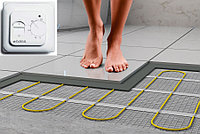07. 05. Then I use the same layer in a different way to output my specular maps and other utility maps. Yeti is very good for that kind of process as you can combine all the patches in the same node tree at the end. I soon realised it was too much and that it was slowing me down, not much for the rendering but more for the iterations I was able to do while painting, exporting both my textures and displacement maps in three steps was taking far too much time. Combing hair
Combing the hair was a quite time consuming process. After that, a little bit of touch up in compositing and the picture is finished! I paint different layers of details in ZBrush and combine them in Photoshop or nuke based on the projects. Whereas in Zbrush it move fast and it is easier to stay objective on your own work. «I used photogrammetry to reconstruct the carved wood part of the chair,» explains Jean-Michel, who visited the Louvre museum in Paris, where he took photos of an historical Napoleon chair from different angles and fed the images into 123D Catch. The UV stage
After the retopology has been finished, you have to open proper uvs. I define a small area, comb it precisely then jump to the next one utils I have the full hair-style. I often us cavity maps from ZBrush to add a bit of extra detail in my hand painted textures. Start with concept sketches
As my character is designed to be animated later, the process is very classic. 09. Displacement maps
Once your uvs are done, you can start to export all your displacement maps once you details have been re-projected. So I switched back to one uv patch at the end. 02. Personally I use some exr 32 bit float maps in order to keep consistent settings across the scenes and have the same result than in Zbrush without having to play with numbers. The project took a year to create as Jean-Michel modelled the entire figure for animation as well as paying attention to the finer details. See Jean-Michel Bihorel’s art and other artist’s projects in 3D World 190, on sale now. 08. The concept was devised on paper by Camille and then Jean-Michel realised it in 3D, from modelling to compositing. I pose the character, touch up the pose for some of the elements in ZBrush then the scene is ready for the final lighting and rendering! 06. 3D scanning with photogrammetry helps quite a lot but doesn’t provide a complete solution. Painting textures
I usually start to paint my textures once all these steps are achieved. In the case of my character I had to separate the nose from the rest of the face in a disgraceful uv cut around it otherwise the amount of stretch would have decrease a lot the effective resolution I would have been able to use for it. I use Advance Skeleton for that. The eye tends to get used to what it sees very fast so working in maya can be dangerous as every step is very slow, it becomes less flexible and you are less likely to notice the flaws in the style. Retopology
Once the model is approved you just need to do a good topology for the character. You can do it in zbrush or benefit from the new modeling tools in maya. 03. ZBrush concept
I started the model in ZBrush in order to move freely without the need for a topology. I comb one patch at the time in order to have more control. 04.
Library builder
Articles about the repair, construction, interior design and landscaping, plumbing, electrical, waterproof wire, wire gas, building materials, construction machinery and equipment ...
Библиотека строительства - статьи о строительстве и ремонте © 2020
Frontier Theme


